The ketogenic diet, otherwise known as LCHF or keto, is a high-fat low-carb diet similar to Atkins and other types of low-carb diets.
The idea is to decrease carb intake drastically and replace it with healthy fat sources.
The end goal results in a state of ketosis, which effectively has your body running on ketones.
Here we will discuss a ketosis guide for complete beginners.
Keto for Fat Loss
Ketogenic diets which are around 50 grams of net carbohydrates per day are very useful for obtaining lean gains.
As a result, you reset the body’s enzymatic machinery to use fat as its main fuel reservoir in the deficiency of carbs.
There are three possible points with your diet that may cause a fat-loss plateau.
- An Excessive Amount Of Protein
- Not Enough Dietary Fats
- An Excess Amount Of Carbohydrates
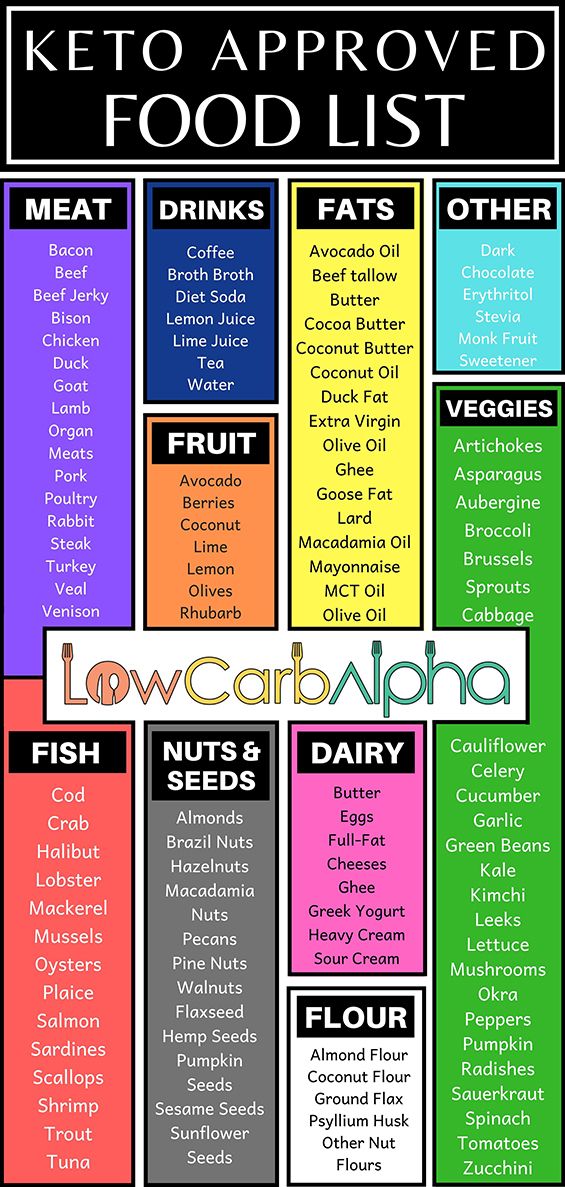
Ketosis Guide For Complete Beginners
Traditionally, bodybuilders and weightlifters opt to induce their protein from tuna and lean meats such as chicken breast.
I myself used to load up on “healthy” low fat super high protein meals.
Any meats with fat on would be considered junk food.
Nevertheless, on a diet like such as keto, you ought to change to darker meats and fatty fish varieties, especially salmon, mackerel, and fresh tuna.
Eating salmon, chicken thighs, and lean beef enables you to get your protein and fat in one source.
A high intake of meats is not as important as you may think.
Unless you’re a competitive athlete, distance runner, participate in HIIT training or vigorous bodybuilding, you don’t require such large protein consumption.
Healthy fats such as grass-fed butter and coconut oil or other fatty foods are much more important.
When your diet is exhausted of carbs, your glycogen levels drop.
You enter ketosis, a natural method in that your body consumes ketone bodies to evade draining the protein reserves in your muscles.
Your body preferably uses energy from your fat reserves (a state of ketosis).
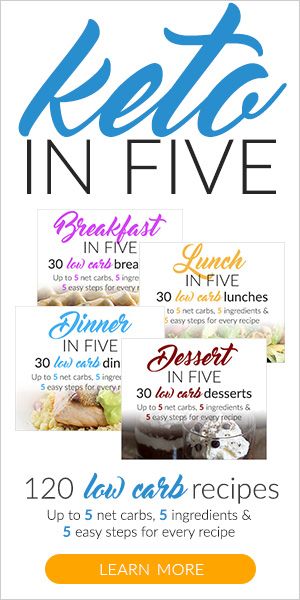
How to start Keto Dieting
Beginning a ketogenic requires a drastic change from typical American dieting.
You must learn to be aware of the consumption of extra carbs and improve your nutritional meal plan.
The carbs you are not even aware you’re eating, like those in nuts and meal-replacement shakes.
Total carbs add up enormously. By the time you realize your net carb intake for the day, it’s over 100g total carbs.
Eating a handful of nuts and seeds are fine occasionally.
Also, beware of the level of inflammatory omega 6 as opposed to healthy omega 3 from over-consumption of plant foods.
You should rely additionally on another fat supply that’s carb-free like oils and cheeses.
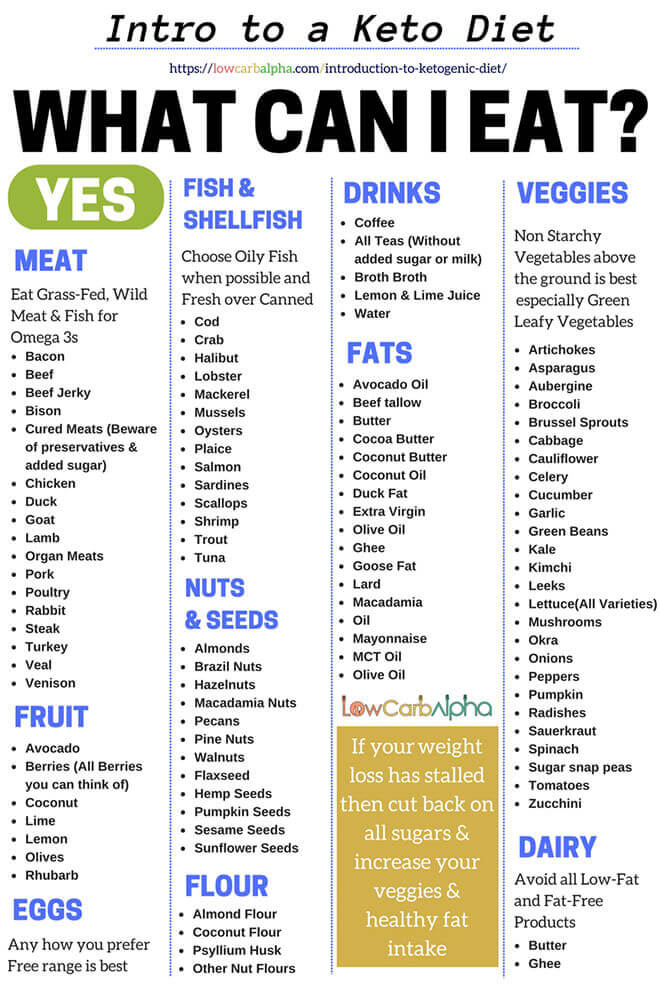
Fat Sources
Some top fatty foods and oils to eat and supplement with on keto are:
- Avocados
- Avocado Oil
- Coconuts
- Coconut Oil
- Olives
- Almond Butter
- Pork Rinds
- Ghee

Check out some other great foods for fat loss.
Recognize that meal replacement protein or keto shakes and regular protein shakes are not the same.
The standard meal-replacement powder includes up to half your day’s intake of carbs.
This provides useful nutrition if you’re a busy person unable to schedule meals.
Ideally, opt for a scoop of standard protein powder after your workout mixed with some healthy fats.
Coconut oil works well and adds great taste to post-workout shakes while assisting you in a ketosis state.

Ketosis and a Weight Loss
Adjust to a ketogenic diet or low carb diet, make these carbs fall, and you have potential to see your six-pack soon enough.
To bust your plateau, pump up the fat in your diet to around 70 percent of your whole daily calories and decrease the protein by at least 30 percent to 40 percent.
Learn to keep carbs to a minimum even while working out to maximize fat-burning potential.
The remainder of your calories must come from vegetables.
There are many, but here are some of the top vegetables to eat on keto.
- Broccoli
- Spinach
- Cauliflower
- Cabbage
- Lettuce
- Mushrooms
- Brussels Sprouts
- Kale
- Spaghetti Squash
- Zucchini
The list is infinite, but greens always work well with all diets.
For more info on vegetables and carb content check out our veggies guide.
Foods such as spaghetti squash, zucchini, and cauliflower can be used to create tasty keto recipes, including keto pizza made with cauliflower.
You can also make noodles made out of zucchini, for example.
See the ketosis cookbook for many recipes for high-fat low carb meal planning.
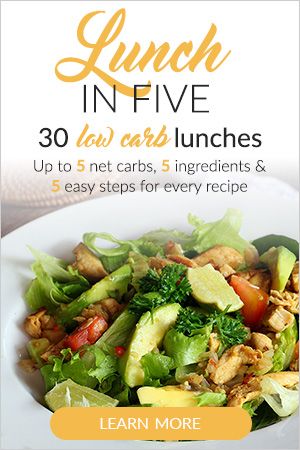
We hope this ketogenic diet for beginners’ guide has helped your understanding of ketosis and aided you on your journey to a healthier lifestyle and better nutrition.
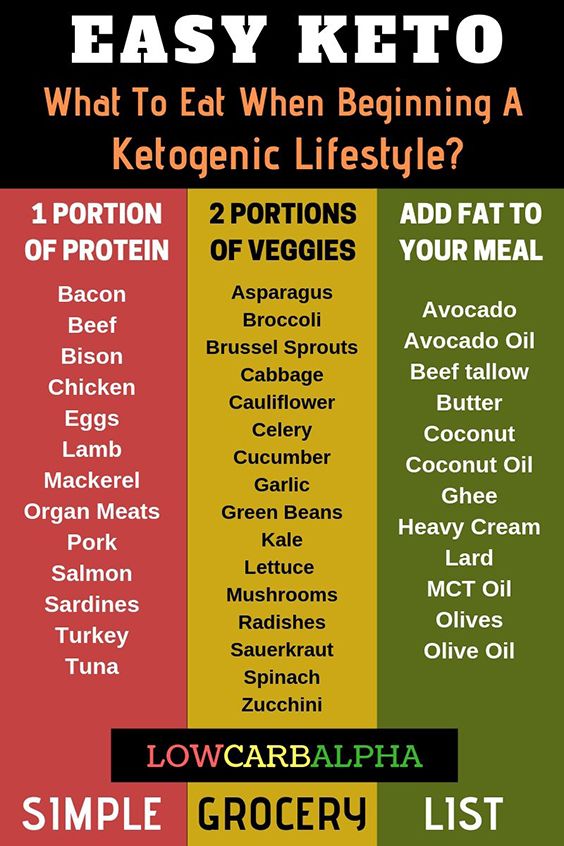

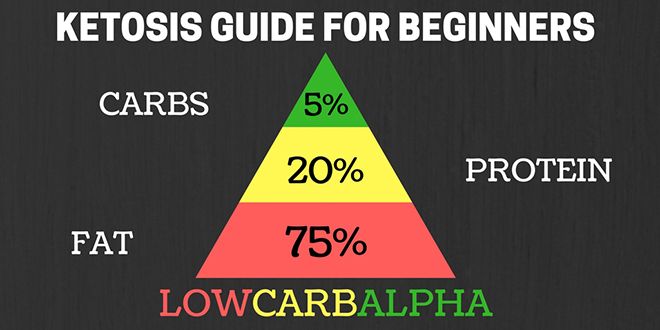


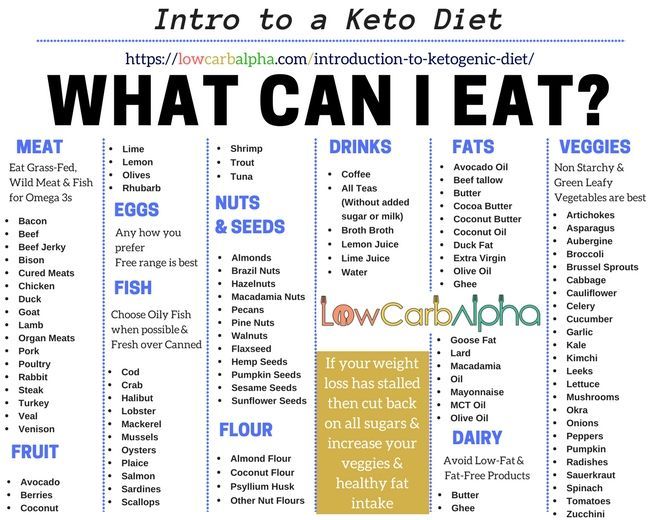
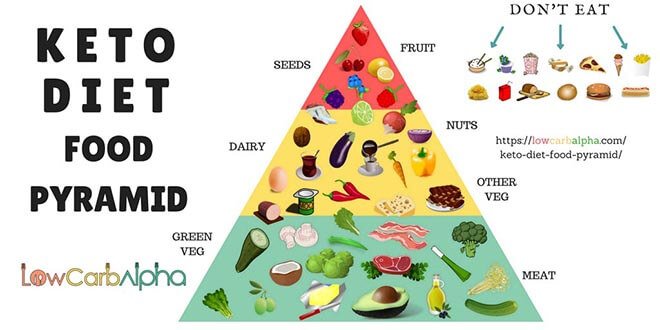
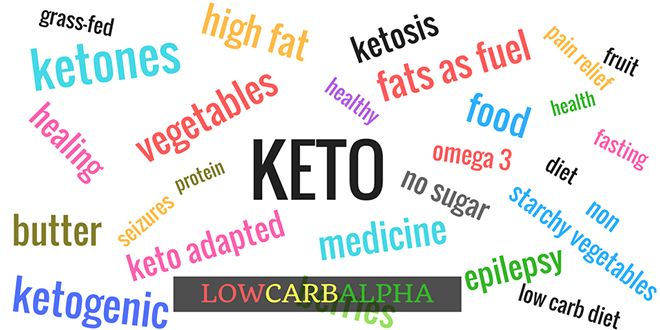
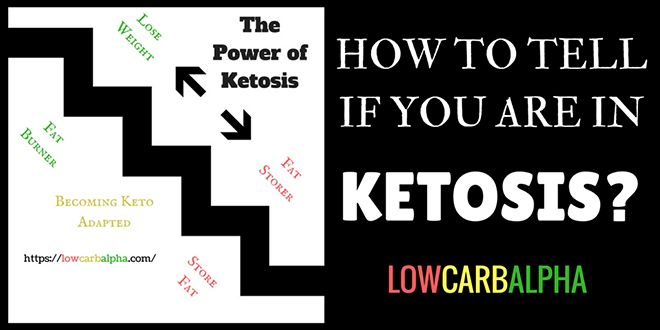
I notice you have no cheese on this list. I thought cheese was ok in KETO? Lin
Yes, cheese is absolutely fine just forgot to include.
How many times do you eat during keto diet
Check out our guide how many meals to eat a day on a keto diet.
How do you know how much to eat when preparing meals or portions?
You can use an online keto calculator to figure out how much you should eat depending on your goals.
How about organic 1/2 and 1/2 in the coffee? No sugar of course.
Sure, is a healthy beverage.
Do you count straight carbs or net carbs?
It is up to you. Basically whatever is easiest for you. We have some more info on net carbs and may be of help.
hi
Im training for a 1/2 Ironman and have a drink that I use for my electrolytes. With my training, can I take in more carbs?? Below is a copy of the nutrient content of the powder I use for my exercising.
Supplement Facts
Servings Per Container: 25
Serving Size: 2 Scoops (60.33 g)
Ingredients
Amount Per Serving
Calories: 224
Calories from Fat: 0
Total Fat: 0g – 0%
Saturated Fat: 0g – 0%
Trans Fat: 0g – 0%
Cholesterol: 0mg – 0%
Sodium: 445mg – 19%
Potassium: 132mg – 4%
Total Carbohydrate: 52g – 17%
Dietary Fiber: 0g – 0%
Sugars: 24g
Protein: 4g – 7%
Vitamin A (Beta-Carotene): 0mg – 0%
Vitamin C: 0mg – 0%
Calcium: 30mg – 3%
Magnesium: 23mg – 6%
Thiamin: 0mg – 0%
Riboflavin: 0mg – 0%
Iron: 0mg – 0%
Maltodextrin
Dextrose
Natural cane sugar
Citric Acid
Natural Fruit Punch Flavors
Sea salt
Potassium chloride
Magnesium gluconate
Calcium lactate gluconate
Whey protein isolate
L-Isoleucine
L-Valine
L-Leucine
The supplement drink will take up all your carb macros for the day. If you are super strict with your food choices you could easily make it work and consume the electrolyte drink around workout times.
If you wanted to lower the carbs while maintaining high-intensity training you can mix Himalayan salt with water for a calorie-free electrolyte drink.
When do you introduce sugar substitute on the keto diet?
Are Atkins shakes okay for this diet???
They are fine in general but it may increase cravings for other foods. Also, with a high protein shake, it will make it harder to stick to keto macros for the day.